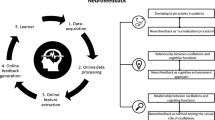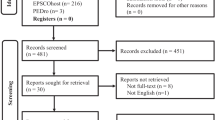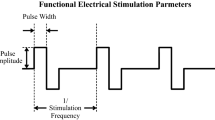Abstract
This study aimed to investigate the potential effect of bilateral transcranial direct current stimulation (tDCS) on repetitive bimanual force control and force coordination in healthy young adults. In this sham-controlled crossover study, 18 right-handed young adults were enrolled. Repetitive bimanual handgrip force control trials were performed by the participants at 40% of maximum voluntary contraction until task failure. We randomly provided bilateral active and sham tDCS to the primary motor cortex (M1) of each participant before conducting the repetitive bimanual force control task. We quantified the number of successful trials to assess the ability to maintain bimanual force control across multiple trials. Moreover, we estimated bimanual force control and force coordination by quantifying force accuracy, variability, regularity, and correlation coefficient in maximal and adjusted successful trials. Force asymmetry was calculated to examine potential changes in motor dependency on each hand during the task. Bilateral tDCS significantly increased the number of successful trials compared with sham tDCS. The adjusted successful trial revealed that participants who received bilateral tDCS maintained better bimanual force control and coordination, as indicated by decreased force variability and regularity as well as more negative correlation coefficient values in comparison with sham condition. Moreover, participants who received bilateral tDCS produced more force from the dominant hand than from the nondominant hand in both maximal and adjusted successful trials. These findings suggest that bilateral tDCS on M1 successfully maintains bimanual force control with better force coordination by modulating motor dependency.





Similar content being viewed by others
Availability of data and materials
The datasets used and analyzed during the current study are available from the corresponding author on reasonable request.
References
Abdelmoula A, Baudry S, Duchateau J (2016) Anodal transcranial direct current stimulation enhances time to task failure of a submaximal contraction of elbow flexors without changing corticospinal excitability. Neuroscience 322:94–103
Alix-Fages C, Romero-Arenas S, Castro-Alonso M et al (2019) Short-term effects of anodal transcranial direct current stimulation on endurance and maximal force production. A systematic review and meta-analysis. J Clin Med 8:536
Arias P, Corral-Bergantiños Y, Robles-García V, Madrid A, Oliviero A, Cudeiro J (2016) Bilateral tDCS on primary motor cortex: effects on fast arm reaching tasks. PLoS One 11:e0160063
Batsikadze G, Moliadze V, Paulus W, Kuo MF, Nitsche MA (2013) Partially non-linear stimulation intensity-dependent effects of direct current stimulation on motor cortex excitability in humans. J Physiol 591:1987–2000
Biabani M, Farrell M, Zoghi M, Egan G, Jaberzadeh S (2018) Crossover design in transcranial direct current stimulation studies on motor learning: potential pitfalls and difficulties in interpretation of findings. Rev Neurosci 29:463–473
Bikson M, Grossman P, Thomas C et al (2016) Safety of transcranial direct current stimulation: evidence based update 2016. Brain Stimul 9:641–661
Blinch J, Flindall JW, Smaga Ł, Jung K, Gonzalez CLR (2019) The left cerebral hemisphere may be dominant for the control of bimanual symmetric reach-to-grasp movements. Exp Brain Res 237:3297–3311
Brunoni AR, Amadera J, Berbel B, Volz MS, Rizzerio BG, Fregni F (2011) A systematic review on reporting and assessment of adverse effects associated with transcranial direct current stimulation. Int J Neuropsychopharmacol 14:1133–1145
Cattaert D, Semjen A, Summers JJ (1999) Simulating a neural cross-talk model for between-hand interference during bimanual circle drawing. Biol Cybern 81:343–358
Cogiamanian F, Marceglia S, Ardolino G, Barbieri S, Priori A (2007) Improved isometric force endurance after transcranial direct current stimulation over the human motor cortical areas. Eur J Neurosci 26:242–249
Faber H, Opitz A, Zipser C, Müller-Dahlhaus F, Ziemann U (2017) P 56 tDCS shows no effects on motor cortex excitability at rest. Clin Neurophysiol 128:e356–e357
Fan J, Voisin J, Milot M-H, Higgins J, Boudrias M-H (2017) Transcranial direct current stimulation over multiple days enhances motor performance of a grip task. Ann Phys Rehabil Med 60:329–333
Faul F, Erdfelder E, Lang AG, Buchner A (2007) G*Power 3: a flexible statistical power analysis program for the social, behavioral, and biomedical sciences. Behav Res Methods 39:175–191
Frazer AK, Williams J, Spittle M, Kidgell DJ (2017) Cross-education of muscular strength is facilitated by homeostatic plasticity. Eur J Appl Physiol 117:665–677
Gandevia SC (2001) Spinal and supraspinal factors in human muscle fatigue. Physiol Rev 81:1725–1789
Ghasemian-Shirvan E, Farnad L, Mosayebi-Samani M, Verstraelen S, Meesen RLJ, Kuo M-F, Nitsche MA (2020) Age-related differences of motor cortex plasticity in adults: a transcranial direct current stimulation study. Brain Stimul 13:1588–1599
Gomes-Osman J, Field-Fote EC (2013) Bihemispheric anodal corticomotor stimulation using transcranial direct current stimulation improves bimanual typing task performance. J Mot Behav 45:361–367
Halakoo S, Ehsani F, Hosnian M, Zoghi M, Jaberzadeh S (2020) The comparative effects of unilateral and bilateral transcranial direct current stimulation on motor learning and motor performance: a systematic review of literature and meta-analysis. J Clin Neurosci 72:8–14
Hazime FA, da Cunha RA, Soliaman RR, Romancini ACB, Pochini AC, Ejnisman B, Baptista AF (2017) Anodal transcranial direct current stimulation (tDCS) increases isometric strength of shoulder rotator muscles in handball players. Int J Sports Phys Ther 12:402–407
Hikosaka M, Aramaki Y (2021) Effects of bilateral transcranial direct current stimulation on simultaneous bimanual handgrip strength. Front Hum Neurosci 15:674851
Hu X, Newell KM (2011) Aging, visual information, and adaptation to task asymmetry in bimanual force coordination. J Appl Physiol 111:1671–1680
Hu X, Loncharich M, Newell KM (2011) Visual information interacts with neuromuscular factors in the coordination of bimanual isometric force. Exp Brain Res 209:129–138
Hu K, Chen Y, Guo F, Wang X (2022) Effects of transcranial direct current stimulation on upper limb muscle strength and endurance in healthy individuals: a systematic review and meta-analysis. Front Physiol 13:834397
Hummel FC, Heise K, Celnik P, Floel A, Gerloff C, Cohen LG (2010) Facilitating skilled right hand motor function in older subjects by anodal polarization over the left primary motor cortex. Neurobiol Aging 31:2160–2168
Jin Y, Kim M, Oh S, Yoon B (2019a) Motor control strategies during bimanual isometric force control among healthy individuals. Adapt Behav 27:127–136
Jin Y, Lee J, Oh S, Celeste Flores Gimenez M, Yoon B (2019b) Noninvasive brain stimulation over the M1 enhances bimanual force control ability: a randomized double-blind sham-controlled study. J Mot Behav 51:521–531
Kagerer FA, Summers JJ, Semjen A (2003) Instabilities during antiphase bimanual movements: are ipsilateral pathways involved? Exp Brain Res 151:489–500
Kang N (2022) Low-frequency oscillations and force control capabilities as a function of force level in older women. Appl Sci 12:1812
Kim HJ, Lee JH, Kang N, Cauraugh JH (2021) Visual feedback improves bimanual force control performances at planning and execution levels. Sci Rep 11:21149
Klem GH, Lüders H, Jasper HH, Elger CE (1999) The ten-twenty electrode system of the international federation. The International Federation of Clinical Neurophysiology. Electroencephalogr Clin Neurophysiol Suppl 52:3–6
Lee JH, Kang N (2020) Effects of online-bandwidth visual feedback on unilateral force control capabilities. PLoS One 15:e0238367
Lindenberg R, Nachtigall L, Meinzer M, Sieg MM, Flöel A (2013) Differential effects of dual and unihemispheric motor cortex stimulation in older adults. J Neurosci 33:9176–9183
Lodha N, Patten C, Coombes SA, Cauraugh JH (2012) Bimanual force control strategies in chronic stroke: finger extension versus power grip. Neuropsychologia 50:2536–2545
Lu P, Hanson NJ, Wen L, Guo F, Tian X (2021) Transcranial direct current stimulation enhances muscle strength of non-dominant knee in healthy young males. Front Physiol 12:788719
Machado S, Jansen P, Almeida V, Veldema J (2019) Is tDCS an adjunct ergogenic resource for improving muscular strength and endurance performance? A systematic review. Front Psychol 10:1127
Murian A, Deschamps T, Bourbousson J, Temprado JJ (2008) Influence of an exhausting muscle exercise on bimanual coordination stability and attentional demands. Neurosci Lett 432:64–68
Nitsche MA, Paulus W (2000) Excitability changes induced in the human motor cortex by weak transcranial direct current stimulation. J Physiol 527(Pt 3):633–639
Nitsche MA, Paulus W (2001) Sustained excitability elevations induced by transcranial DC motor cortex stimulation in humans. Neurology 57:1899–1901
Oki K, Mahato NK, Nakazawa M, Amano S, France CR, Russ DW, Clark BC (2016) Preliminary evidence that excitatory transcranial direct current stimulation extends time to task failure of a sustained, submaximal muscular contraction in older adults. J Gerontol A Biol Sci Med Sci 71:1109–1112
Panzer S, Kennedy D, Leinen P, Pfeifer C, Shea C (2021) Bimanual coordination associated with left- and right-hand dominance: testing the limb assignment and limb dominance hypothesis. Exp Brain Res 239:1595–1605
Park S-B, Sung DJ, Kim B, Kim S, Han J-K (2019) Transcranial direct current stimulation of motor cortex enhances running performance. PLoS One 14:e0211902
Rahman S, Siddique U, Frazer A, Pearce A, Kidgell D (2020) Anodal tDCS increases bilateral corticospinal excitability irrespective of hemispheric dominance. J Sci Med Sport 2:1–17
Richman JS, Moorman JR (2000) Physiological time-series analysis using approximate entropy and sample entropy. Am J Physiol Heart Circ Physiol 278:H2039-2049
Rueda-Delgado LM, Solesio-Jofre E, Serrien DJ, Mantini D, Daffertshofer A, Swinnen SP (2014) Understanding bimanual coordination across small time scales from an electrophysiological perspective. Neurosci Biobehav Rev 47:614–635
Salvador M, Ugrinowitsch H, Romano-Silva MA, Miranda D, Apolinário-Souza T, Lage G (2017) Transcranial direct current stimulation and manual asymmetries: the effect of the stimulation on the manual dexterity. J Phys Educ 28:e2837
Sehm B, Kipping J, Schaefer A, Villringer A, Ragert P (2013) A comparison between uni- and bi-lateral tDCS effects on functional connectivity of the human motor cortex. Front Hum Neurosci 7:183
Seidler RD, Bernard JA, Burutolu TB et al (2010) Motor control and aging: links to age-related brain structural, functional, and biochemical effects. Neurosci Biobehav Rev 34:721–733
Serrien DJ, Cassidy MJ, Brown P (2003) The importance of the dominant hemisphere in the organization of bimanual movements. Hum Brain Mapp 18:296–305
Serrien DJ, Ivry RB, Swinnen SP (2006) Dynamics of hemispheric specialization and integration in the context of motor control. Nat Rev Neurosci 7:160–166
Shafer RL, Solomon EM, Newell KM, Lewis MH, Bodfish JW (2019) Visual feedback during motor performance is associated with increased complexity and adaptability of motor and neural output. Behav Brain Res 376:112214
Swinnen SP (2002) Intermanual coordination: from behavioural principles to neural-network interactions. Nat Rev Neurosci 3:348–359
Swinnen SP, Wenderoth N (2004) Two hands, one brain: cognitive neuroscience of bimanual skill. Trends Cogn Sci 8:18–25
Taylor JL, Amann M, Duchateau J, Meeusen R, Rice CL (2016) Neural contributions to muscle fatigue: from the brain to the muscle and back again. Med Sci Sports Exerc 48:2294–2306
Tazoe T, Endoh T, Kitamura T, Ogata T (2014) Polarity specific effects of transcranial direct current stimulation on interhemispheric inhibition. PLoS One 9:e114244
Urbaniak G, Plous S (2013) Research randomizer (version 4.0) [computer software]
Vaillancourt DE, Haibach PS, Newell KM (2006) Visual angle is the critical variable mediating gain-related effects in manual control. Exp Brain Res 173:742–750
Vancleef K, Meesen R, Swinnen SP, Fujiyama H (2016) tDCS over left M1 or DLPFC does not improve learning of a bimanual coordination task. Sci Rep 6:35739
Walsh RR, Small SL, Chen EE, Solodkin A (2008) Network activation during bimanual movements in humans. Neuroimage 43:540–553
Wang B, Xiao S, Yu C, Zhou J, Fu W (2021) Effects of transcranial direct current stimulation combined with physical training on the excitability of the motor cortex, physical performance, and motor learning: a systematic review. Front Neurosci 15:648354
Williams PS, Hoffman RL, Clark BC (2013) Preliminary evidence that anodal transcranial direct current stimulation enhances time to task failure of a sustained submaximal contraction. PLoS One 8:e81418
Yentes JM, Hunt N, Schmid KK, Kaipust JP, McGrath D, Stergiou N (2013) The appropriate use of approximate entropy and sample entropy with short data sets. Ann Biomed Eng 41:349–365
Acknowledgements
The authors sincerely thank you for the study participants.
Funding
This work was supported by Research Assistance Program (2021) in the Incheon National University.
Author information
Authors and Affiliations
Contributions
JHL and NK contributed to data collection, statistical analyses, data interpretation, and manuscript drafts. JHL conceived and designed the study. All the authors read and approved the final manuscripts.
Corresponding author
Ethics declarations
Conflict of interest
The authors declare that they have no competing interest.
Additional information
Communicated by Winston D Byblow.
Publisher's Note
Springer Nature remains neutral with regard to jurisdictional claims in published maps and institutional affiliations.
Supplementary Information
Below is the link to the electronic supplementary material.
Rights and permissions
Springer Nature or its licensor (e.g. a society or other partner) holds exclusive rights to this article under a publishing agreement with the author(s) or other rightsholder(s); author self-archiving of the accepted manuscript version of this article is solely governed by the terms of such publishing agreement and applicable law.
About this article
Cite this article
Lee, J.H., Kang, N. Transcranial direct current stimulation influences repetitive bimanual force control and interlimb force coordination. Exp Brain Res 241, 313–323 (2023). https://doi.org/10.1007/s00221-022-06526-0
Received:
Accepted:
Published:
Issue Date:
DOI: https://doi.org/10.1007/s00221-022-06526-0




